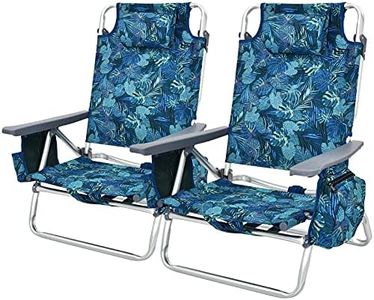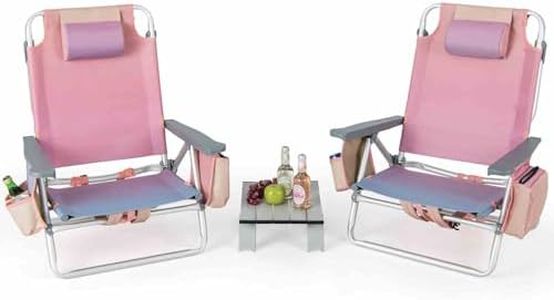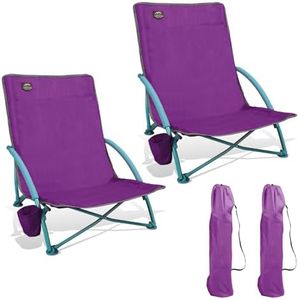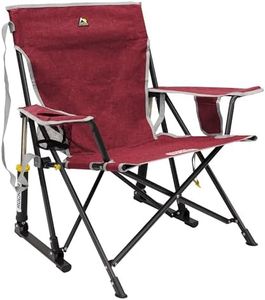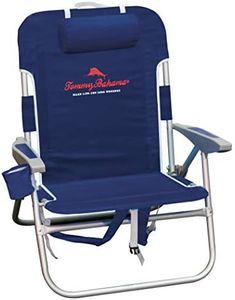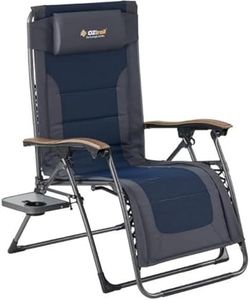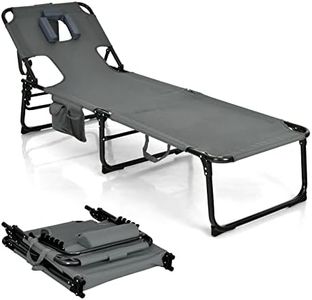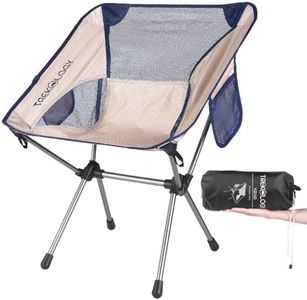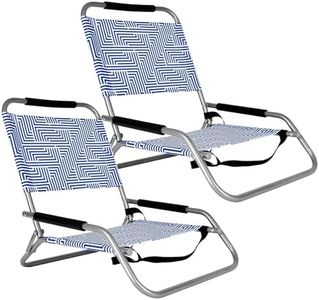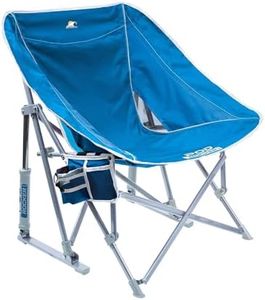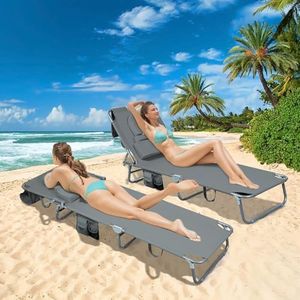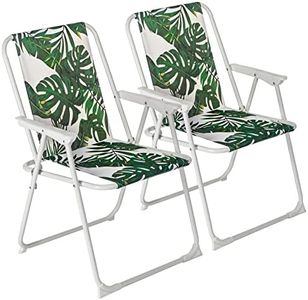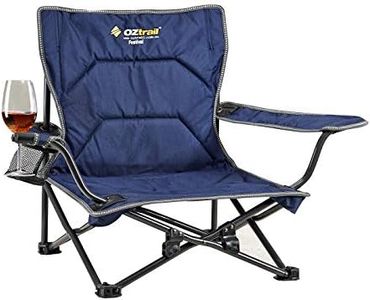We Use CookiesWe use cookies to enhance the security, performance,
functionality and for analytical and promotional activities. By continuing to browse this site you
are agreeing to our privacy policy
10 Best Beach Chairs
From leading brands and best sellers available on the web.By clicking on a link to a third party's website, log data is shared with that third party.
Buying Guide for the Best Beach Chairs
Choosing the right beach chair can make your time by the sea much more comfortable and enjoyable. With so many options available, it helps to know what features and specifications to look out for. The main point is to think about how you'll use the chair—whether you're planning to lounge for hours, need something easy to carry, or want extra comfort and support. Each feature plays a role in making sure the chair fits your needs, so understanding them will help narrow down the best option for you.Weight CapacityWeight capacity indicates the maximum weight the chair can safely support. This is important because exceeding it could damage the chair or make it unsafe to use. Weight capacities often range from about 200 pounds to over 300 pounds. If you are buying for an adult, always check this to ensure safety and durability. Smaller capacities may suit children or lighter adults, while higher capacities offer added security and are generally more robust.
Chair WeightThe weight of the chair itself tells you how easy it will be to carry. Lightweight chairs, which can be under 5 pounds, are great for those who need to walk long distances to the beach or want minimal effort when transporting. Mid-weight options provide a balance between sturdiness and portability. Heavier chairs, over 10 pounds, may offer more features or comfort but can be cumbersome if you have to carry them far. Think about your walk to the beach and how much you want to carry.
MaterialThe material refers to both the frame and the fabric used in the chair. Aluminum frames are popular for being light and rust resistant, while steel frames are heavier but often sturdier. For the seat and back, polyester and other synthetic fabrics dry quickly and resist mildew, which is important in sandy, wet environments. If you prioritize easy carrying, choose lighter materials, and if you want long-lasting durability, look for sturdy frames and thick fabrics.
AdjustabilityAdjustability means how many positions the chair can recline or sit upright in. Some chairs only have one position, while others can recline almost flat. If you want to sunbathe or nap, a chair with multiple or full recline positions is helpful. For simple upright seating to chat or read, one or two positions might be enough. Decide how you imagine yourself relaxing at the beach to choose how much adjustability matters.
Portability FeaturesPortability features include things like backpack straps, carry handles, and folding styles. These factors make it easier to transport your chair to and from the beach. Backpack-style straps are very convenient if you expect to walk some distance. Some chairs fold very flat for easy storage in your car or closet. Pick portability options based on how far you'll be carrying the chair and how easy you want packing up to be.
Seat HeightSeat height is how far the seat is from the ground, which affects comfort and ease of getting in and out. Low chairs, around 8 inches, are common for lounging close to the sand and are good for relaxing or sunbathing. Higher chairs, at 13 inches or more, make it easier to get up and down, which is useful for people with mobility concerns or those who don't want to sit low to the ground. Think about your comfort preferences and needs when choosing the seat height.
Extra FeaturesExtra features include things like cup holders, pillows, canopies, storage pockets, and built-in coolers. These make your beach experience more convenient or comfortable. If you like to keep drinks or snacks handy, cup holders or pockets will be useful. A canopy can provide extra shade, which is great for sunny beaches. Decide which extra features would actually make your beach trip more enjoyable, as they can add weight and complexity.
